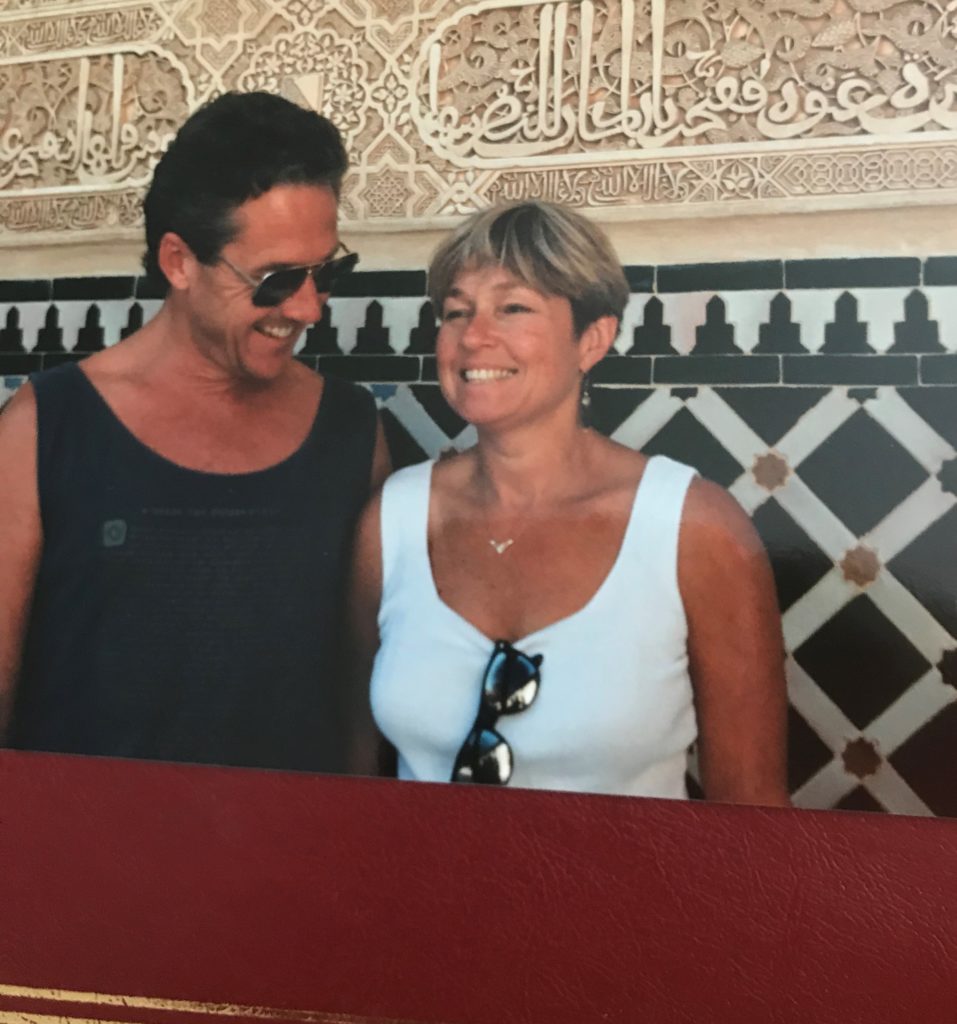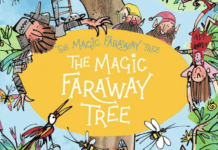The Shock of Diagnosis: Part 1 of 4
By Greta Salmi
My happy marriage had a twist and turn when my husband was diagnosed with a rare and progressive form of Muscular Dystrophy, two years after we married. Our story is one of spousal caregiving, that required so much of us both.
“You are going to leave me eventually,” my husband said, “So why not just get it over with and leave me now?” That was a fall evening in Seattle in 2000. My husband, Joel, and I were sitting at the kitchen table when I saw his jaw tighten and his eyes narrow. It was a deeply troubling question for me to hear. I was too stunned to answer. Joel had a progressive disease that was slowly taking over his muscle function, although most people wouldn’t have noticed yet. But he knew, and I knew. We had a happy marriage and this depressing prediction caught me off guard. Little did we know how much our lives would change.
Advertisement
Early in our courtship, we often joked that we could have been on Oprah. Former high school sweethearts, we met up again at our 20th high school reunion in 1986. Although we lived very different lives, one thousand miles apart, our conversations that night showed that we had much in common. We started writing and what we shared drew us closer. We married two years later, bringing together my daughter and twin sons with Joel’s daughter. Those courtship love letters are still in a box, saved in a closet.
It started early in our marriage. There was the missed step while Joel was running, and he didn’t jump quite as high during basketball games. But, he was in his late thirties and that happens to everyone, doesn’t it? Slowing down, getting older, nothing to worry about.
In 1989, one year after our marriage, we planned a delayed honeymoon to Europe. Joel had a routine physical that included blood tests. Our doctor read the report with concern. There were really high numbers of an enzyme (CPK) that’s released when muscles break down. “Not to worry,” my husband explained. “I work out with heavy weights and that breaks down muscle tissue which then rebuilds.” She still suggested that they retest after our trip. It was a fabulous time, everything seemed normal. We were our usual active selves, enjoying running together through the Parisian neighborhoods with our only cares about which wines to drink that day.
Advertisement
HurryCane Freedom Edition Folding Cane with T Handle
When we returned, the retesting told a different story. After not working out for two weeks, the CPK readings were still abnormally high. My husband told his doctor about his mother’s unusual type of Muscular Dystrophy (MD). The doctor urged him to see the specialists that his mother had seen. Eventually, that next spring, those specialists spent hours testing his muscles. Although no definitive test existed in 1990, these doctors sadly concluded that he too, had MD.
The news hit me in my stomach, and the future, two years into our marriage, now seemed to have swerved. Yet Joel felt good, and we put aside the difficult questions about our future. His mom became our reference — thirty years older than her son, she was still walking and a vibrant 71-years-old.
The next five years did not show dramatic change. Joel could still throw a football and keep our sons busy retrieving passes. But by 1995 he had stopped running, could only lift lighter weights, and the hills seemed to get bigger. He had days he described as “heavy gravity” days.
One day, he told me about seeing his reflection in a store window as he struggled to walk up a hill and how it made him feel: diminished, awkward and weak. “I look like a drunk, weaving up this street,” he said. “I am an attorney in this town, and people will think I have lost it!” My reply was, “Being a lawyer doesn’t require you to walk well.”
Making Moves
We realized if we wanted to travel, we had to do it now. We took our four children to Italy, France, and Greece. We tried to do everything we could do and see and eat and drink, and our kids were happy to join us in this.
I remember joking with the kids: “Look, if Joel ends up in a wheelchair, and he makes that same awful joke again, who gets to push him off the cliff?” We were in Rome then, and I still can see the blue sky and white ruins in the distance. Humor was our armor; we thought that we could manage this disorder without it asking too much of any of us. This trip didn’t require any assistance for walking but that would soon change.

Various canes marked the stages of his weakening legs. The cane that telescoped into a small rod, perfect for travel, was treasured for a while. We assumed that canes would be all he would need. But even the elegant polished wood couldn’t keep him from stumbling.
To accommodate the shared custody of our children we had been commuting for years on weekends from Eugene, Oregon, where I was an elementary school principal, to Seattle, where Joel had his law practice. By 2000, after twelve years of marriage, the kids were out of high school, so we sold the country home and I moved to Seattle to join Joel full time. The cool, gray days of Seattle can be great for your skin, but they were a blanket on my spirits. “Never doubt that I love you,” I would tell Joel. “I moved to Seattle, didn’t I?”
I found a great position there as a principal and we bought a new home, with an eye out for a future problem with stairs. Joel was still walking and able to go up the few steps to the front door. We worked hard and played as often as our demanding jobs would allow. We thought we had the example of Joel’s mom to guide us in this journey. She walked, although with difficulty, into her early eighties. She traveled less but maintained an avid interest in her family and the world. We thought we had decades to do all that we wanted. We were wrong. What happened to her body in her seventies was happening to Joel in his fifties.
Advertisement
“How can this be happening now?” we asked. Doctors told us that the disorder manifests itself differently for each person, and that there was no timeline of progression. In my mind, MD was no longer a disorder, but a disease, with all the anguish and seriousness that the word disease connotes. This disease was becoming a third partner in our marriage, one to consider in every plan we made.
In 2010, we discovered that Joel’s MD was caused by an autosomal dominant gene, which means that if you inherit that gene from one affected parent, you will have the disease. If you don’t inherit that gene, you can’t develop the disease, nor can you pass it on to your children. Fifty percent chance. The disease is either part of your life or gone from your family tree forever.
Joel was the first one of his generation diagnosed and the most affected. The doctors surmised that all his working out had worn his muscles out sooner. “This is crazy,” I said. “Doing all the things that are good for you made this disease attack your muscles sooner!” Despite the fifty percent chance of inheriting the disease gene, all of his mom’s generation, and my husband’s two siblings were eventually diagnosed with MD, one hundred percent in both generations.
Four of his five cousins had confirmed diagnoses. Yet all of the others who were diagnosed were still walking into their sixties and seventies, still able to use their arms and hands, however weakened. In the beginning of these discoveries, Joel and his relatives rarely talked about MD with each other. There seemed an unspoken agreement to ignore the disease that had plagued their family.
GRETA SALMI lives with her husband, Joel, in the S.F. Bay Area. She coaches educators and was a school principal for nineteen years. She can be reached via Twitter, @GretaSalmi.


![Netflix’s Bold Bet on ‘Just A Dash’ Sparks Buzz: Why Matty Matheson’s Wild Cooking Show Is the Flavor Ride LA Craves [TRAILER] Netflix brings Matty Matheson Just A Dash to global audiences](https://dailyovation.com/wp-content/uploads/2025/12/Screenshot-2025-12-09-at-2.10.32-PM-218x150.jpg)






![The Rise of Wisconsin Rye Whiskey: A Flavorful Story of Community and Craft [Exclusive Interview with John Mleziva] Explore the rise of Wisconsin rye whiskey, its Driftless flavor, and the community-driven craft behind State Line Distillery’s celebrated five-year release.](https://dailyovation.com/wp-content/uploads/2025/12/Screenshot-2025-12-02-at-8.44.22-PM-218x150.jpg)










![Get Your Indie Movie Made (Responsibly): Jeff Caruso of Wrapbook Leads the AFM 2025 Film Finance Conversation [Exclusive Interview] American Film Market](https://dailyovation.com/wp-content/uploads/2025/11/AmericanFilmMarket2025-1-218x150.jpg)













